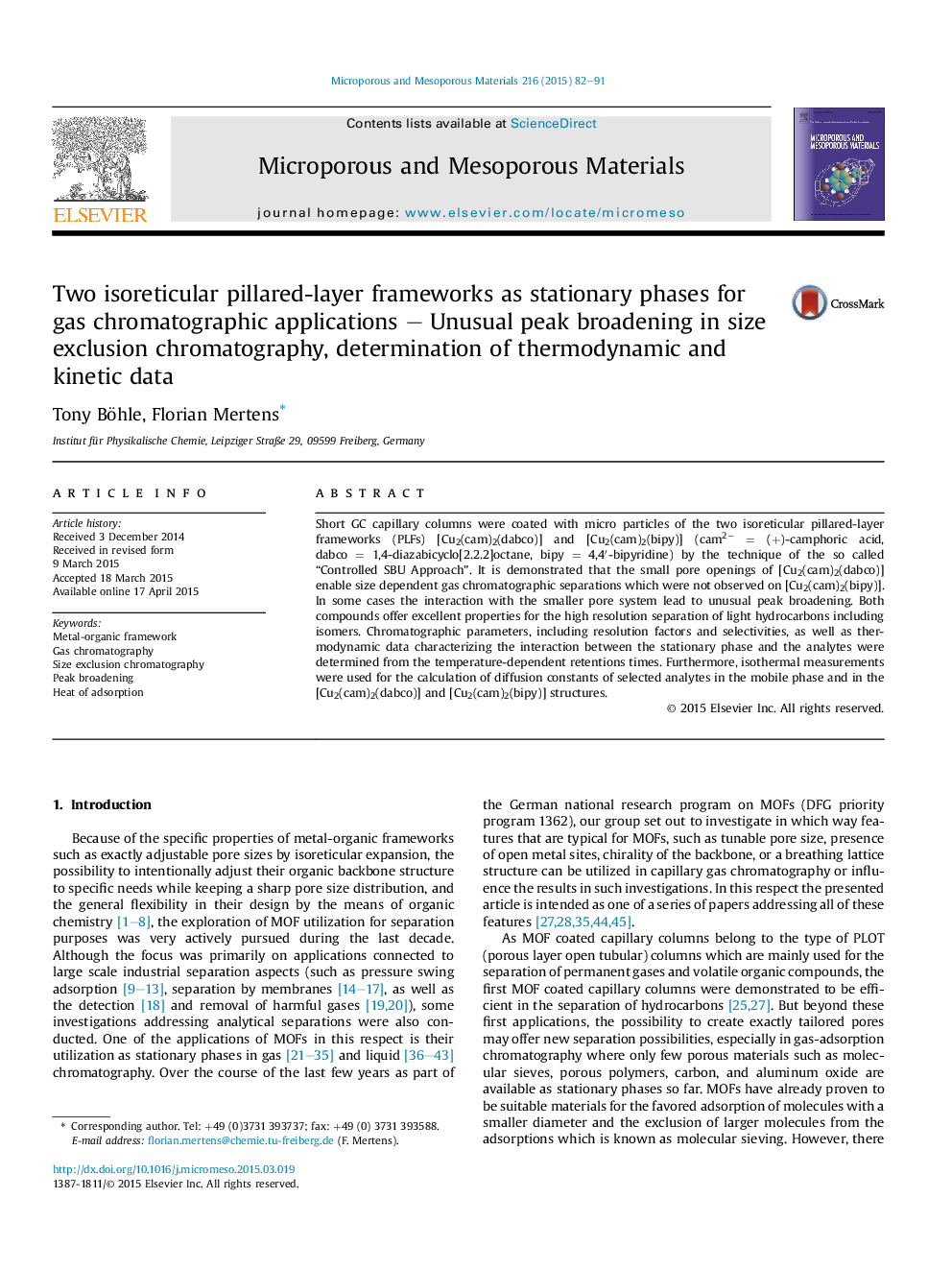| Article ID | Journal | Published Year | Pages | File Type |
|---|---|---|---|---|
| 72578 | Microporous and Mesoporous Materials | 2015 | 10 Pages |
•[Cu2(cam)2(dabco)] and [Cu2(cam)2(bipy)] based capillary columns were generated.•[Cu2(cam)2(dabco)] based capillaries enabled size dependent GC separations.•The investigated MOF based GC columns show unusual peak broadening.•A correlation between the heats of adsorption and the pore sizes was observed.
Short GC capillary columns were coated with micro particles of the two isoreticular pillared-layer frameworks (PLFs) [Cu2(cam)2(dabco)] and [Cu2(cam)2(bipy)] (cam2− = (+)-camphoric acid, dabco = 1,4-diazabicyclo[2.2.2]octane, bipy = 4,4′-bipyridine) by the technique of the so called “Controlled SBU Approach”. It is demonstrated that the small pore openings of [Cu2(cam)2(dabco)] enable size dependent gas chromatographic separations which were not observed on [Cu2(cam)2(bipy)]. In some cases the interaction with the smaller pore system lead to unusual peak broadening. Both compounds offer excellent properties for the high resolution separation of light hydrocarbons including isomers. Chromatographic parameters, including resolution factors and selectivities, as well as thermodynamic data characterizing the interaction between the stationary phase and the analytes were determined from the temperature-dependent retentions times. Furthermore, isothermal measurements were used for the calculation of diffusion constants of selected analytes in the mobile phase and in the [Cu2(cam)2(dabco)] and [Cu2(cam)2(bipy)] structures.
Graphical abstractFigure optionsDownload full-size imageDownload as PowerPoint slide
